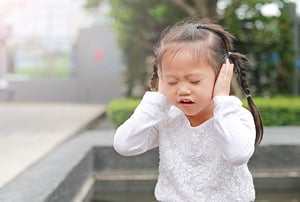
In September 2016, Child Care Resource Center, the resource and referral agency serving the Tulsa Metropolitan Area, began implementing the Child Care Aware® of America’s Resiliency Hub pilot project. The goal of this project is to “increase the capacity of child care resource and referral agencies to serve as resilience hubs in their communities in the event of emergencies or natural disasters.”
The Child Care Resource Center team began providing training on emergency preparedness using a curriculum developed by CCAoA and Save the Children. This curriculum, Child Care Emergency Preparedness, is designed to help child care programs understand the importance of being prepared for any and all emergencies, while helping programs develop their emergency plans. After the initial training, the CCRC team enhanced the curriculum by adding information on helping teachers deal with the social-emotional needs of children during and after disasters. This need became apparent when a four-year-old came home from child care very upset about the “fire drill” he experienced that day. During his first week in the classroom, the program executed their monthly fire drill as required by Oklahoma’s Child Care Licensing. The noise from the alarm terrified him. When some investigation was done, it became apparent that the fire drill just happened, was over and the children went back to their normal routine without any discussion of the drill. For months after this event, he was terrified of loud noises.
What Was Missing?
We decided then that we needed to add a component to our training that deals with how to prepare children before and after drills. We now include communication strategies for teachers to use with their children before and after each drill, the importance of using alarms, and some lesson plan ideas. Then we began searching for research, curricula and media. We found several different books for early childhood professionals:
- After the Crisis: Using Storybooks to help Children Cope by Cathy Grace and Elizabeth F. Shores© 2010 Gryphon House, Inc. This book references dozens of children’s literature under topics that include helping children cope with a variety of natural disasters. The book also provides curricula, story stretcher ideas that are developmentally appropriate for children 2-8 years old.
- A Fighting Chance – Supporting Young Children Experiencing Disruptive Change by Jane Humphries and Kari Rains© 2017 Redleaf Press. This book uses executive functioning as the foundation for setting up an early childhood program to foster all children’s development. The book includes case stories of children experiencing trauma.
- Resilience and Coping Intervention by Sandra F. Allen© 2011, 2014. This is a therapeutic model designed for use with children ages 7 years and older.
With all of the recent natural disasters, including a major tornado in Tulsa on August 6, this project has been a wonderful addition to assist Oklahoma’s child care community remain strong and resilient. Providers have gained in knowledge of how to appropriately practice drills, build their emergency kits, and develop evacuation plans just to name a few of the project accomplishments. Oklahoma’s children thank Child Care Aware® of America.
Karen Smith is the Director of Child Care Resource Center, a Program of Community Service Council. Melinda Belcher, Resource and Referral Coordinator and Jessica Smith, Child Care Consultant are also part of the Resiliency Hub project providing training and technical assistance to child care programs and provided input on this blog.






